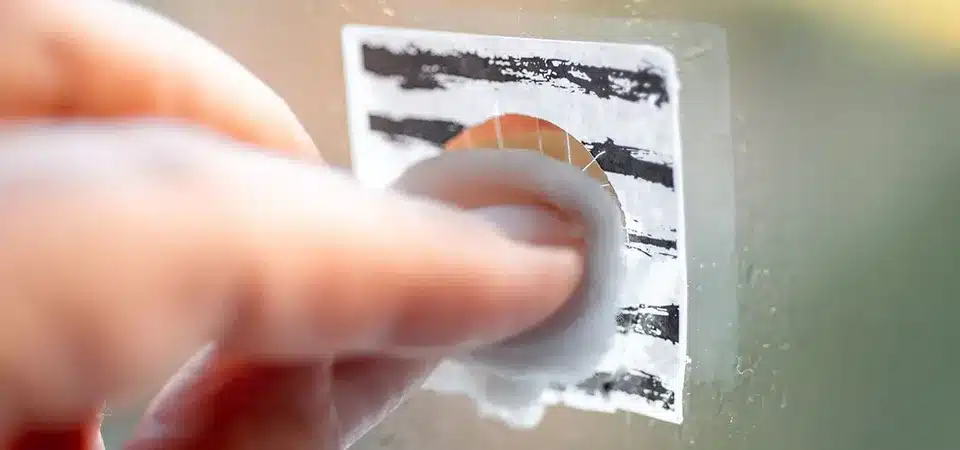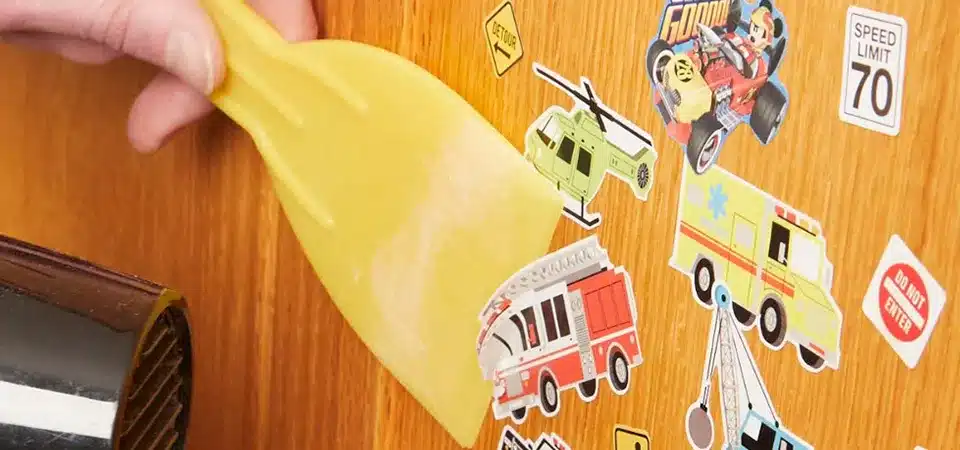You have a perfect vinyl design but want to put it on a tote bag or t-shirt. You're worried it will peel right off, wasting all your effort and expensive vinyl.
Yes, permanent vinyl will stick to fabric, but only temporarily. It is not designed for fabric and will quickly crack, peel, or wash off. For a durable, long-lasting design on clothing, you must use Heat Transfer Vinyl (HTV) instead.
I get this question a lot in my printing business. People create amazing sticker designs and naturally want to put them everywhere, including on clothes. While I love the creativity, I always have to give them the honest answer: permanent vinyl and fabric just don't mix for the long term. It's about using the right tool for the right job, and I'm here to explain exactly why that is and what you should be using instead.
What makes permanent vinyl the wrong choice for fabric?
You see the word "permanent" and think it should work on anything. But using it on fabric leads to a design that falls apart, making your project look unprofessional and cheap.
Permanent vinyl has a pressure-sensitive adhesive designed to stick to smooth, hard surfaces like glass or metal. It only sits on top of fabric fibers and cannot withstand washing, stretching, or friction, causing it to fail quickly.
Let's dive deeper into the science, because understanding this is key. Permanent adhesive vinyl, the kind we use for car decals and custom stickers, has a glue that works with pressure. When you press it down onto a water bottle, the adhesive spreads out and forms a strong bond with that non-porous surface. Fabric, on the other hand, is porous and full of tiny gaps. The vinyl's adhesive can only grab onto the very top of the woven fibers.
Think of it this way: putting permanent vinyl on fabric is like placing a sticker on a very fuzzy carpet. It might stick for a minute, but as soon as the carpet moves or you try to clean it, the sticker is coming right off. The adhesive simply has nothing solid to hold onto. That's why, for any fabric project, you need a vinyl with an entirely different kind of adhesive.
Can you make permanent vinyl last longer on fabric?
You have a roll of permanent vinyl and want to make it work. You've seen hacks online, but you're afraid you will just end up with a sticky mess and a ruined shirt.
While some people try using fabric glue or spray adhesive to help permanent vinyl stick better, these are not reliable methods. The extra glue can make the fabric stiff, seep through the material, or wash out, and the vinyl itself will still crack.
As a professional in this field, I have to advise against these "hacks." They might seem clever, but they often lead to more trouble than they're worth. I once had a client who tried to use our permanent vinyl stickers for a one-day event on staff t-shirts. Even with extra spray adhesive, some were peeling and curling at the edges before the event was even over. The friction and movement were just too much. Here’s a breakdown of the key factors at play.
Fabric material
The texture of the fabric makes a huge difference. A smoother, more tightly woven material gives the adhesive a slightly better surface to grab.
- Slightly Better Chance: Canvas, denim, and some smooth polyester blends. The adhesive can find more surface area.
- Almost No Chance: Terry cloth, fleece, velvet, and stretchy knit fabrics. These materials have too much texture and flex for the vinyl to hold on.
Type of vinyl
This is the most critical factor. There are two main families of craft vinyl, and they are not interchangeable.
- Adhesive Vinyl (like Permanent Vinyl): Has a sticky back exposed by peeling off a paper liner. It's for hard goods.
- Heat Transfer Vinyl (HTV): Has a heat-activated adhesive on a clear carrier sheet. It feels smooth, not sticky, to the touch. It is specifically made for fabric.
Durability
Permanent vinyl on fabric has almost no durability.
- Stretching & Movement: Fabric flexes and moves. The stiff vinyl can't stretch with it, so it cracks and peels.
- Washing: This is the ultimate deal-breaker. The water, detergent, and tumbling action in a washing machine will break down the adhesive and peel the vinyl design right off, often on the very first wash.
What is the right way to create a lasting design on fabric?
You want a professional-looking custom shirt that you can wash and wear without worry. You are tired of temporary solutions and want to do it the right way from the start.
The correct, industry-standard method is to use Heat Transfer Vinyl (HTV) and apply it with a heat press or iron. This process melts the vinyl's special adhesive, fusing it directly into the fabric's fibers for a permanent, flexible, and washable bond.
This is how all professional custom apparel is made, and it's a process we use for certain projects in my own shop when it's a better fit than screen printing. HTV is designed from the ground up to become one with the fabric. The process is straightforward and gives you a result you can be proud of. First, you cut your design in reverse on the HTV. Second, you "weed" away the excess vinyl, leaving just your design on the clear, slightly sticky carrier sheet.
The magic happens in the final step: application. Using a heat press (for best results) or a hot iron, you apply firm pressure at a specific temperature for a set amount of time. This heat activates the adhesive on the back of the HTV, melting it so it flows into the weave of the fabric. Once it cools, it's permanently fused. The result is a design that stretches with the fabric and can withstand dozens of washes. It's the only way to guarantee your design will last.
Conclusion
Permanent vinyl is for hard surfaces, not fabric. For durable, washable designs on clothing, always choose Heat Transfer Vinyl (HTV) for a professional and lasting result.











